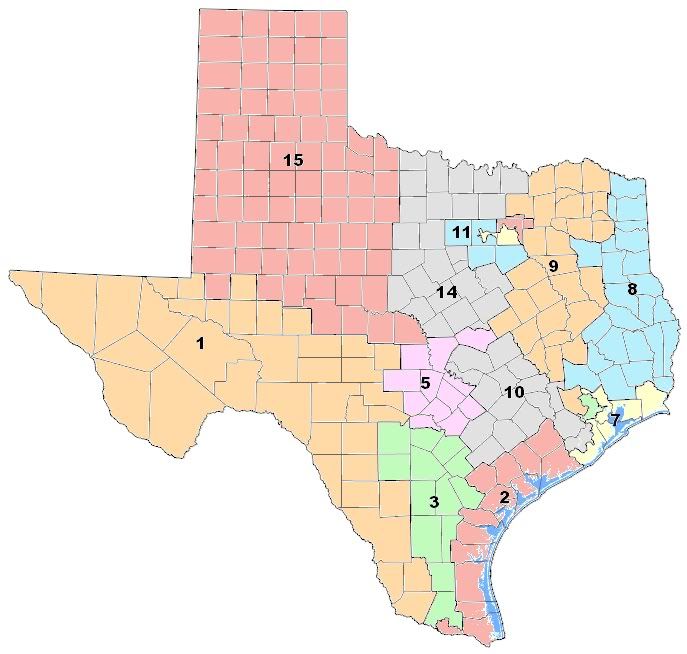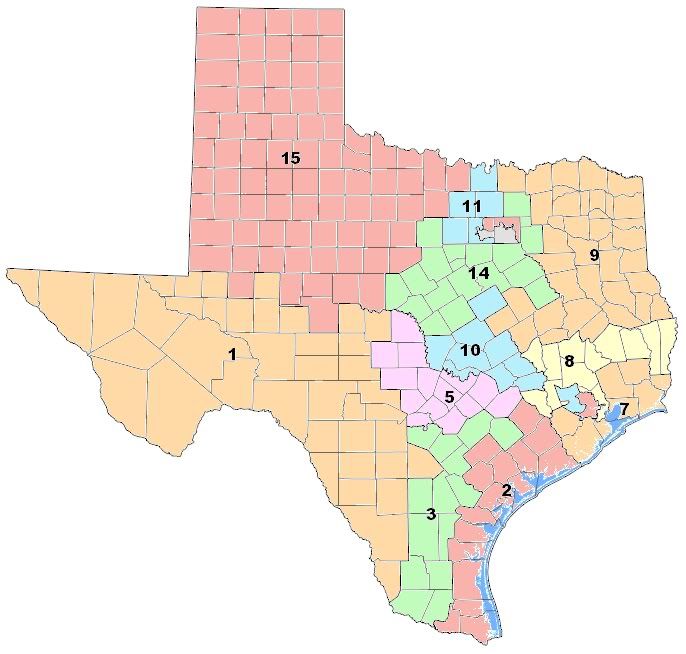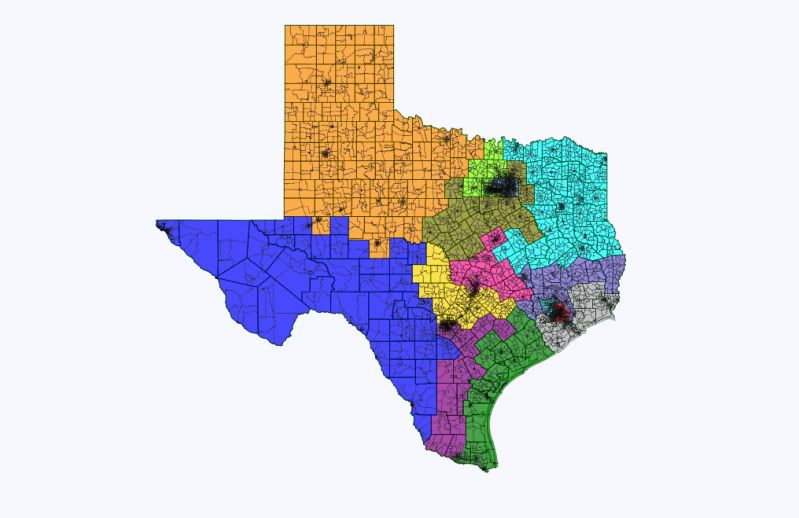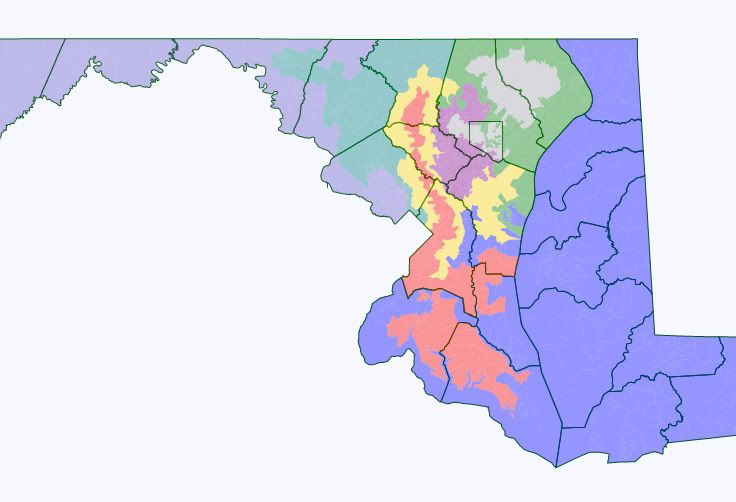(Also at Nevada Progressive)
In our previous glimpses into redistricting Nevada’s Congressional Districts, we discussed what would happen if The Legislature redraws the lines based on certain politicians’ future aspirations. But this time, I’m throwing a curveball at you. What happens if The Legislature can’t agree on a map?
Today, the fun really begins with a glimpse of a possible court drawn map.
Yes, you heard me right. Two law suits have already been filed, one by the Nevada Democratic Party and another by the Nevada GOP, and more legal action may follow if The Legislature drags on without a map ready for 2012. If the increasingly brutal state budget battle drags on to Summer Special Session with no agreement in sight, there’s a good chance the gridlock will also extend to redistricting. And as much as Nevada Supreme Court justices do NOT want to wade into redistricting, I’ve been hearing that both they and the major parties are seeing it as more of a real possibility.
So what happens? Let’s take a look at just that, as a few angry judges throw out the political memos and guide a nonpartisan team to draw “fair” lines.
NV-02 (The Dark Green District)
Population: 674,932
69.3% White (73.7% VAP)
The State of Play
As you can see above, this is still a Washoe County based district. The good news for Republicans is that Washoe’s flirtations with Democrats can be offset by heavily Republican rural areas like Elko, Douglas, and Lyon Counties. However, the bad news is that swingy Mineral County and Carson City are also included. All in all, The 2nd District becomes slightly more Democratic.
Who’s All In?
Now that Kirk Lippold and Sharron Angle are officially in, let the tea-nuttery begin! It will be to fun to see those two out-crazy each other, then watch as “poor” Mark Amodei and Brian Krolicki try to get some of those teabagger votes without going too far off the deep end.
On the Democratic side, State Treasurer Kate Marshall is sounding more and more like a real candidate.
The Wild Cards
However, Marshall may not be alone. 2006 and 2008 NV-02 Democratic nominee Jill Derby is also looking at the race, along with Assembly Member Debbie Smith (D-Sparks) and Reno City Council Member Jessica Sferrazza. Now that all out madness is ensuing on the GOP side, Washoe Dems are increasingly liking their chances here… But it still won’t be an easy ride. Why? See below.
Estimated 2008 Results: 49-50% Obama (D)
Early Race Rating: Leans Republican for now, Tossup if Angle or Lippold wins the GOP primary
NV-04 (The Purple District)
Population: 675,314
61.9% White (65.2% VAP)
The State of Play
Now here’s where things start to get wild! Notice some changes? For one, it’s the new district that now gets drawn into the rurals. The new 4th District starts in rural Churchill County (Fallon gets placed in NV-02 because it can be argued it shares a community of interest with the other Reno exurbs), but otherwise the other rural counties are left whole as the district stretches from Ely down to Pahrump, then finally to Clark County. And once the district crosses into Clark, it takes in northern rural areas, from Indian Springs to Overton & Mesquite, then drops into the valley to take in the once rapidly expanding Northwest and Southwest Las Vegas suburbs, as well as all of Summerlin and some whiter West Side neighborhoods.
In essence, this is THE classic swing district with a unique mix of rural Republican strongholds, urban Democratic bases, and a whole lot of evenly divided suburban battlegrounds that can very well go either way next year… And that’s how the court will want it.
Who’s All In?
Notice something else? There’s no incumbent here! Even though there technically is one in Shelley Berkley, we all now know what she’s up to. So in her absence, there should be a wild ride on both sides in vying for this seat.
On the Republican side, State Senator Barbara Cegavske‘s (R-Summerlin) wish will finally be fulfilled as she now has an open seat to compete in. But then again, she may get an unwanted surprise if local teabagger groups rally behind the newly crowned, tea-tinged superstar in State Senator Elizabeth Halseth (R-Northwest Vegas). State Assembly Member Scott Hammond (R-Northwest Vegas) may also feel the temptation.
On the Democratic side, Assembly Member Marcus Conklin (D-Northwest Vegas) may be real opportunity here. And considering his gracious concession earlier this month and offer to endorse Chris Giunchigliani for Las Vegas Mayor after 15 votes separated them in the primary, Larry Brown is busy re-earning goodwill that may come in handy should he run for Congress next year. (By the way, in case you were wondering, he’s also apologized for the confusion over his support for SB 283 and domestic partnerships for LGBTQ families.) And unless the Nevada GOP can sideline Cegavske and Halseth in favor of a more mainstream nominee, Dems may very well like their chances here.
The Wild Cards
Hey, isn’t it wild enough already!
Estimated 2008 Results: 51-54% Obama (D)
Early Race Rating: Tossup
NV-01 (The Blue District)
Population: 674,765
47.0% Latino (41.2% VAP), 29.1% White (34.5% VAP), 14.6% African American (14.8% VAP)
The State of Play
Even if Shelley Berkley wasn’t running for Senate, the court would not care where she lives or where she “wants” to represent. But now that she’s definitely out of the picture, all bets are off! The 1st District contracts to just (all of) North Las Vegas and the older, more Latino and African American heavy parts of The City of Las Vegas, as well as a few heavily Latino unincorporated Clark County areas and the northern half of The Strip.
Who’s All In?
State Senate Majority Leader Steven Horsford (D-North Las Vegas) hasn’t done a great job of hiding his desire to head to DC. And thankfully for him, a court drawn map doesn’t prevent that, as this is designed to be a VRA protected minority-majority coalition district.
However, the path isn’t too clear for him. After all, this is a strong Latino plurality district, and State Senator Ruben Kihuen (D-North Las Vegas) is a fierce fighter who’s gaining broader appeal as a strong, progressive voice in The Legislature. Since this district overlaps with nearly all of his current Senate district, Kihuen definitely can’t be counted out.
The Wild Cards
State Senator John Lee (D-North Las Vegas) isn’t stupid, so perhaps he can’t entirely be counted out yet. But as I’ve said before, he’s acting far too conservative this session to really gain traction in a Democratic primary here.
And sorry, Republicans, but there’s really no GOPer who can compete here.
Estimated 2008 Results: 67-68% Obama (D)
Early Race Rating: Safe Democratic
NV-03 (The Red District)
Population: 675,520
56.2% White (60.3% VAP), 23.1% Latino (19.8% VAP), 9.6% Asian American (10.0% VAP)
The State of Play
Now here’s where things get really crazy! Remember, the court is overseeing the drawing of this map. The judges don’t care what Joe Heck wants or who he wants to represent. All they care about are population equity and fair boundaries. So unfortunately for him, he’s forced to accept a Henderson based district that keeps the entire city intact while stretching north into the strongly Democratic East Side (which can be argued shares a community of interest with most of Henderson), and west across The Strip to heavily Democratic Spring Valley (which can be argued shares a community of interest with The East Side, and is needed for population equity), and across Eastern Avenue to Democratic leaning Silverado Ranch.
However, Democrats shouldn’t get too giddy here. Remember, ALL of Henderson is kept in here, including Joe Heck’s own MacDonald Ranch/Roma Hills base as well as the opulent, affulent, & Republican dominant Anthem & Seven Hills communities. Also kept in are more GOP heavy Boulder City, along with the rural communities of Searchlight and Laughlin further south (as well as Primm, added in from NV-02).
Who’s All In?
Obviously, Joe Heck wants another term. However, he will really have to rethink his strategy if The Legislature deadlocks on the state budget and redistricting gets determined in court. Since he’s likely to be kept in what will at least be a Democratic tilting district, he will need far more crossover support than he got in 2010 to survive next year in a district President Obama will probably win by double digits again.
So obviously, Heck looks to be an inviting target for Assembly Speaker John Oceguera (D-Silverado Ranch). He’s survived tough battles before, and he’s in the fight of his life now over the state budget. He may feel ready to take on Heck…
But there’s someone else waiting in the wings, someone who will have waited a year for the rematch she’s been looking for. Dina Titus definitely shouldn’t be counted out, especially since she only barely lost last time… And this time, many of the areas where she performed worst have been removed. Meanwhile, her East Side base is left intact, along with the Green Valley (Henderson) neighborhoods where she beat Heck.
The Wild Cards
Byron Georgiou has quickly turned from welcomed Democratic fundraiser to unwelcome Democratic pariah. Both Shelley Berkley and Harry Reid want him out of the Senate race, and rumors have surfaced about him possibly running for House instead. So will it be here? Or in the new NV-04 seat? Or maybe even NV-01? Whatever the case, a whole lot of Democratic strategists nervously await where Georgiou will land.
And of course, depending on what Joe Heck does, particularly how he votes in The House, there’s a chance of him being called for “tea time” in the GOP primary.
Estimated 2008 Results: 55-57% Obama (D)
Early Race Rating: Tossup for now, Leans Democratic if Heck has primary woes & Dems get a top notch nominee
So there you have it. This is just one scenario of what might happen if redistricting Nevada’s Congressional Districts is tossed to the courts for judges to decide and nonpartisan players to draw. An incumbent is thrown into jeopardy, two open seats lead to total feeding frenzies, and an epic rematch may be coming to doorsteps near me soon.



















